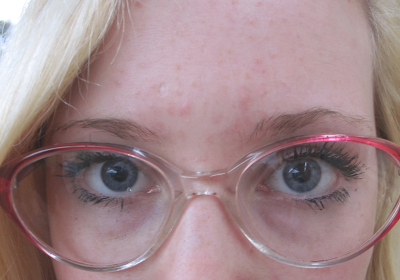Voice Experiment
When experimenting with voices for a film many aspects need to be in mind such as the age of the character and the sound that you are hoping to produce as sometimes the sound is a huge part of the scene. When recording i used my voice to sing the opening lines of "twinkle twinkle little star" to highlight the young antagonist within our opening. However, when listening to it back i had to put myself in the shoes of the audience and think about whether my voice suited our antagonists age. Obviously, if our antagonists age ranges from 12-16 then it may be quite easy to mimic their voice for voice experiment purposes. However, in this case i decided to sing the nursery rhyme in my lowest voice possible so i could resolve it and produce a more innocent sounding voice purely through editing on logic pro. This was easily achieved by adjusting the pitch of the recording a few times and it produced an effortlessly younger and innocent female voice.
However, on the other hand as we are filming a psychological horror the idea of voice morphing was key. Once i achieved a youthful, innocent sounding voice i used logic pro to adjust the reverb of the voice. I added an "ice" effect to the voice creating a cold sounding atmosphere. Additionally as mentioned previously, by adding reverb an echo was created therefore immediately adding a chilled and creepy feel to the voice. As an overall outcome, i did find the voice experiment disappointing as i found the majority of effects were extremely overpowering and distorting therefore blurring the sound of the words. Similarly to the sound experiment it's always good to have another person with you as their opinion matters too as they are the audience in the sense that they are not producing the sound. It's also hard to subvert the conventions of sound within a horror as the sound alone is what makes a horror a horror due to the exaggerated sounds of dead bodies/blood.
To improve, I think what would help would be whilst filming note down what sounds would be emphasised within the particular scene, possibly ask another's opinion and record a number of recordings of that sound and apply it to the scene during the editing process and emphasise on certain aspects therefore adding the shock factor to the horror. Personally, the most challenging part of the sound would be the editing process as it's extremely easy to destroy a sound clip due to over editing such a simple sound such as someone walking, to shy away from this happening i think it's important to edit the clip simplistically listen to it back and again get others' opinion and edit cautiously to an even more realistic sound.
To improve, I think what would help would be whilst filming note down what sounds would be emphasised within the particular scene, possibly ask another's opinion and record a number of recordings of that sound and apply it to the scene during the editing process and emphasise on certain aspects therefore adding the shock factor to the horror. Personally, the most challenging part of the sound would be the editing process as it's extremely easy to destroy a sound clip due to over editing such a simple sound such as someone walking, to shy away from this happening i think it's important to edit the clip simplistically listen to it back and again get others' opinion and edit cautiously to an even more realistic sound.

















































